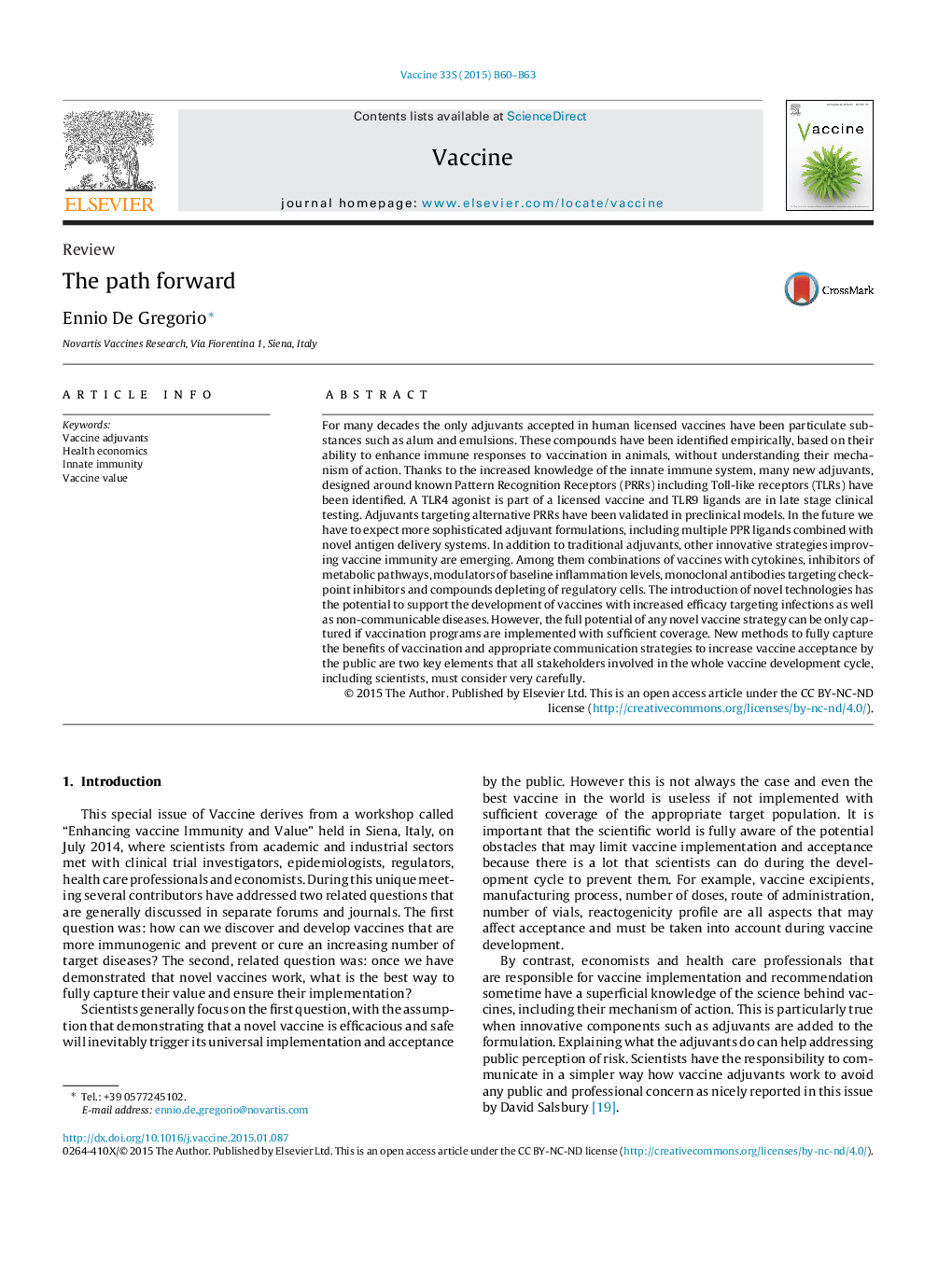| Article ID | Journal | Published Year | Pages | File Type |
|---|---|---|---|---|
| 10965312 | Vaccine | 2015 | 4 Pages |
Abstract
For many decades the only adjuvants accepted in human licensed vaccines have been particulate substances such as alum and emulsions. These compounds have been identified empirically, based on their ability to enhance immune responses to vaccination in animals, without understanding their mechanism of action. Thanks to the increased knowledge of the innate immune system, many new adjuvants, designed around known Pattern Recognition Receptors (PRRs) including Toll-like receptors (TLRs) have been identified. A TLR4 agonist is part of a licensed vaccine and TLR9 ligands are in late stage clinical testing. Adjuvants targeting alternative PRRs have been validated in preclinical models. In the future we have to expect more sophisticated adjuvant formulations, including multiple PPR ligands combined with novel antigen delivery systems. In addition to traditional adjuvants, other innovative strategies improving vaccine immunity are emerging. Among them combinations of vaccines with cytokines, inhibitors of metabolic pathways, modulators of baseline inflammation levels, monoclonal antibodies targeting checkpoint inhibitors and compounds depleting of regulatory cells. The introduction of novel technologies has the potential to support the development of vaccines with increased efficacy targeting infections as well as non-communicable diseases. However, the full potential of any novel vaccine strategy can be only captured if vaccination programs are implemented with sufficient coverage. New methods to fully capture the benefits of vaccination and appropriate communication strategies to increase vaccine acceptance by the public are two key elements that all stakeholders involved in the whole vaccine development cycle, including scientists, must consider very carefully.
Related Topics
Life Sciences
Immunology and Microbiology
Immunology
Authors
Ennio De Gregorio,
